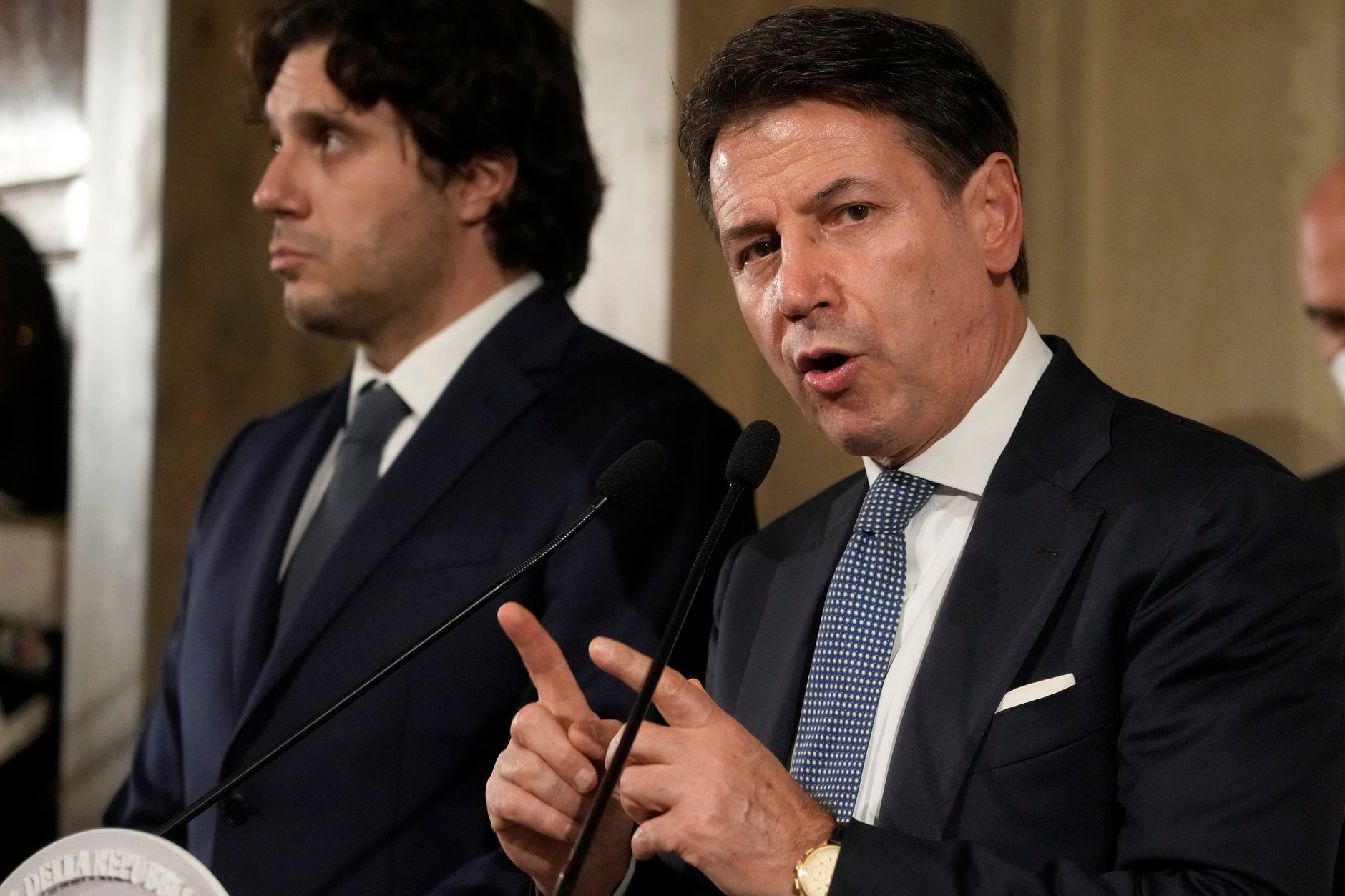(CN) — Former Italian Prime Minister Giuseppe Conte on Wednesday appeared before a panel of judges looking into whether he and other top officials should face criminal charges for allegedly not doing enough to contain the spread of the novel coronavirus at the outset of the pandemic.
Conte and Roberto Speranza, Conte's health minister when the pandemic exploded, went before a special panel of judges in Brescia, a city in Lombardy at the epicenter of Italy's coronavirus outbreak.
The panel, known as a tribunal of ministers, examines cases brought against prime ministers and cabinet members by Italian prosecutors.
Wednesday's hearing was held behind closed doors. Conte and Speranza have said publicly that they did nothing wrong and acted properly. Conte is the leader of the opposition 5-Star Movement party and Speranza is a member of parliament with Free and Equal, a left-wing group.
Conte's lawyer, Caterina Malavenda, told reporters that the 5-Star leader had “made everything clear” with the judges by giving a detailed account of why he took the actions he did at the time.
In the summer of 2020, prosecutors opened the probe to examine whether national and regional officials caused thousands of deaths by not imposing restrictions fast enough after the virus was first detected that February. Conte's government is also accused of failing to update Italy's pandemic response plans before the coronavirus outbreak. The plans hadn't been revised since 2006.
In February 2020, Italy became the first country outside Asia to face dealing with the mass spread of what was still a mysterious but deadly virus.
Dramatically, Conte ordered police to seal off towns where the virus was found circulating and eventually ordered the world's first national lockdown. His actions were both praised and criticized at the time for being both prudent and too drastic.
But prosecutors allege he and regional officials could have prevented more than 4,000 deaths by extending an initial red zone in the city of Bergamo to nearby towns.
In all, 20 people are under investigation. Charges include “aggravated culpable epidemic” and manslaughter. Also facing charges are Attilio Fontana, the governor of Lombardy, and Silvio Brusaferro, the president of the Higher Health Institute, Italy's public health advice agency.
The tribunal of ministers will determine whether there is enough evidence for prosecutors to pursue the case further. Prosecutors are relying on officials' emails, telephone messages and documents to build their case.
Communications have been leaked to the media suggesting Conte and other officials were hesitant to impose lockdowns, partly out of fear that it would hurt Italy's image, as reported by the Guardian.
Separately, more than 600 relatives of Covid-19 victims from Alzano Lombardo and Nembro, towns left out of initial red zones, are pursuing civil damages. Those families pushed prosecutors to open investigations in 2020.
Bergamo registered 6,200 excess deaths in the first catastrophic phase of the outbreak. The scenes of death and desperation in Bergamo helped convince people around the world of the severity of the novel coronavirus.
Italy's first Covid-19 case was confirmed in Codogno, a town in southern Lombardy, on Feb 21, 2020. Two days later, the virus was linked to an outbreak at a hospital in Alzano Lombardo, but that facility remained open.
Bergamo province was not put into a lockdown until a fortnight later when restrictions were imposed on movement for all of the Lombardy region, a controversial step at the time because the region is Italy's economic and industrial heart.
Italy has recorded nearly 190,000 Covid-19 deaths, one of the highest tolls in the world. Last Friday, the World Health Organization declared that it no longer considered the coronavirus a global health emergency.
Courthouse News reporter Cain Burdeau is based in the European Union.
Subscribe to Closing Arguments
Sign up for new weekly newsletter Closing Arguments to get the latest about ongoing trials, major litigation and hot cases and rulings in courthouses around the U.S. and the world.









